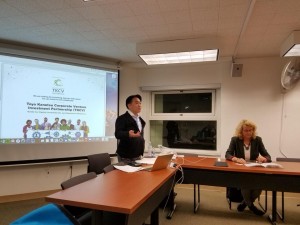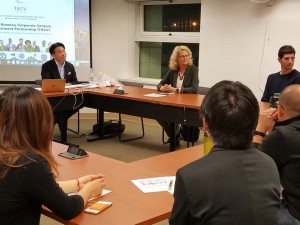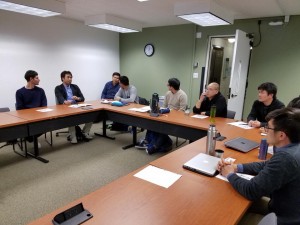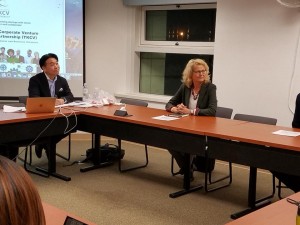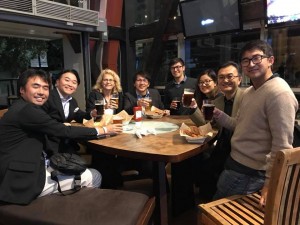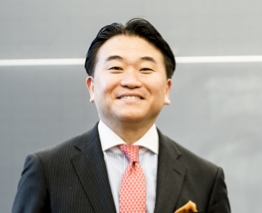カリフォルニア大学サンディエゴ校(UCSD)での冨田賢の日本の大企業のイノベーションとCVC投資のスピーチ内容
カリフォルニア大学サンディエゴ校(UCSD)にて、
Global Policy and Strategy大学院の教授のDr. Ulrike Schaedeの
関連の学生さん達に、社長の冨田賢が、
日本の大企業のイノベーションとCVC投資について、お話をしました!
そのスピーチのために、用意した英文原稿は、下記です!
10名くらいの学生さんに、御参加いただきました!
“Innovation in the New Japan: Corporate Venture Capital and New Business Strategies”,
A conversation with Dr. Satoshi Tomita, CEO, TC Consulting
Hello, let me start with a brief introduction and explanation about corporate venture capital investments and new business developments for large Japanese companies.
My name is Satoshi Tomita, the CEO and president of TC Consulting, and also a professor of the graduate school of business administration, MBA course of Rikkyo University in Tokyo.
First, I would like to express my gratitude to all of you for having us here to speak with you today. I would also like to extend my personal and heartfelt thanks to Professor Ulrike Schaede.
Please refer to the CVC brochure I have provided to you. Does everyone have a copy of the brochure?
First off, let me explain the challenges that large Japanese companies have.
The profitability of large Japanese companies is low. Last year in 2016, Doctor Kunio Ito submitted the Ito report that claimed the ROE (Return on Equity) of large Japanese companies listed in the Tokyo Stock Exchange is too low, so they needed to improve their ratio to 8%. As for large Japanese companies, they need to establish their new business for it according to the Ito report.
Additionally, presently there are 54% of large Japanese companies currently listed on the Tokyo Stock Exchange that have not borrowed anything from banks. In other words, on the company balance sheet the outstanding amount of cash in the assets section is greater than the amount of borrowed funds from banks in the debts section. This means these companies are holding too much of their retained earnings, which is also pointed out in the Ito report. In the past, for Japanese companies, it is said that it is good management to have a company without any debt (nothing borrowed from banks), but these days it is now seen as management with low funding efficiency. The issue then becomes how to use these retained earnings (that is to say, cash) to create innovation leading to the next new business and acquire innovation, and whether to use it for acquisition.
Let’s refer to page 4 of our fund brochure. As you can see, here are the common issues in new business developments for large Japanese companies. Hopefully, you can see the problems here are not only issues for Japanese companies, but also for large companies throughout the world.
First, the limitation of in-house innovation. This in-house innovation means that it is quite closed innovation. As you know, most of large companies have NIH syndrome. NIH stands for Not Invented Here. Typically, large Japanese companies respect in-house innovation, but this strategy has strong limitations for their R&D and new business developments.
Secondly, existing commodities of existing technologies. The source of added value of enterprises’ trends to shift from manufacturing to providing services.
Thirdly, one of the most famous concepts in innovation studies, innovator’s dilemma was proven by Doctor Clayton Christensen. Since you are all graduate students, I don’t believe I need to explain it in detail again here.
Finally, changes in startups’ position. Both in Japan and in the United States, startups achieving many innovations and getting significant positioning in industrial structure. So, even large companies in Japan needed to collaborate with startups as much as possible.
Looking globally, the power of Japanese companies and the Japanese economy is stagnating or weakening in comparison to China. This is tangential, but my seminar at the graduate school of Rikkyo University as a professor has 18 students and 14 of them are Chinese. From this alone, you can understand the strength of the Chinese economy. Large Japanese companies need to get a competitive advantage and higher profitability if they are to remain competitive on the world stage. The situation of lower profitability and stronger competitive pressure from China for large Japanese companies leads to strong requirements to develop new business continuously.
As I mentioned earlier, the closed innovation for large Japanese companies has limitations to create new business, so they have to change their strategy towards open innovation.
As a tool for executing open innovation strategy, corporate venture capital investment is quite useful and efficient. Of course, most of the large companies have huge amounts of sales revenue, including Panasonic, NTT Docomo, Mitsubishi Corporation, and so forth have managed their corporate venture capital fund to seek and acquire useful technologies and business seeds leading to their new business for approximately 15 years.
In these few years, middle sized companies or specialized manufacturing companies like Toyo Kanetsu is considering if they should establish CVC funds.
This October, Toyo Kanetsu, the world’s second largest company of large scale tanks for oil and gas and also a leading company of logistics systems specialized in material handling set up the corporate venturing fund with my company, TC Consulting.
Toyo Kanetsu also has more cash holdings than outstanding bank loans, and is practically free of debt. (Nothing borrowed from banks). Last year, they changed their payout rate to 100% and decided to return all payments to shareholders without using retained earnings. Additionally, they decided to put a policy in place to invest 4 billion yen in M&A and venture investment, which they announced at IR.
You can see the outline of the fund in this brochure.
The activity of this corporate venture capital fund is quite interesting and significant for real business activities and also management studies in innovation.
I have been speaking for a long time already, so I would like to hear from you about your interests, concerns and questions. My academic background and business career is listed on the back of the brochure.


